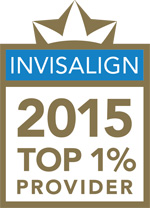Celebrating Halloween With Teeth-Friendly Treats
Halloween is a favorite holiday among children due to the festive games, imaginative costumes, and candy. Modern celebrations stem from a combination of traditions from Pagan and Christian traditions throughout the centuries. The original holiday was called Samhain and derived from the ancient Druids of Ireland. In their belief system, November 1st marked the beginning of winter, and Pagans began their Samhain celebrations at sunset on October 31st.
Modern Celebrations of Halloween
Children and adults love dressing up for Halloween, and this tradition comes from the ancient belief in spirits. From sunset on October 31st until sunrise on November 1st, the souls of the dead entered the physical world. Some spirits were benevolent and wanted only to cross over to the afterlife while others harbored malicious intents of revenge and trickery. Pagans wore masks and disguised themselves so that the malevolent souls would mistake them as fellow spirits.
Families left food and ale outside of their doors to appease the spirits. With the rise of Christianity in Europe, the church encouraged its members to offer food and money to beggars. In exchange, the beggars would agree to pray for the family’s deceased loved ones. Eventually these traditions led to the development of today’s customs where children dressed up and received candy from their neighbors while circling the community.
Teeth-Friendly Treats
With all of the excitement and free candy on Halloween, it is easy to get carried away on a sugar high. Parents warn their children not to eat too many pieces in one night to avoid tummy aches and cavities. Our team at Kubisch & Ferris Orthodontics especially wants to remind children with braces to be extra cautious about the treats they eat because some varieties can get stuck in between the brackets and damage the devices. Sticky candy, such as caramels, fruit chews, and gum should be avoided when wearing braces. Children can trade with their friends and siblings to get only safe candies. The following list offers some alternative treats that children with braces can safely enjoy.
Solid chocolate, including milk, white, or dark
Nougat-filled candy bars, such as Three Musketeers
Candy-coated chocolates like M&Ms
Powdery candy, such as Sweet Tarts or Pixie Stix
Mint-flavored candy
Malted milk balls
Cookies
Peanut butter crackers
When in doubt, children should call Drs. Kubisch and Ferris at (805) 964-4786 or visit Kubisch & Ferris Orthodontics in Los Olivos, CA to make sure If a specific candy is safe. Halloween is a fun holiday for children, and having braces does not have to take away any of the excitement from tasty treats.
Learn the Lingo of an Orthodontist
Orthodontic treatment sounds scary, bit it really isn’t. Orthodontists have their own terminology used to describe dental issues treated with braces and the latest orthodontic technology, like Invisalign. According to Dr. Raymond Kubisch and Dr. Andrew Ferris, top orthodontists in Solvang, California, understanding the terms doctors use can help alleviate the anxiety some patients have before a consultation.
Dr. Kubisch and Dr,. Ferris suggests prospective patients in Solvang, California, learn these 8 simple terms before making an appointment with an orthodontist:
1. Crowding is a dental misalignment that is caused when the dental arch is too small or the teeth are too large. The teeth may bunch together and form a crooked smile. According to Dr. Kubisch and Dr. Ferris, the issue can be more than cosmetic. Crowding causes gums to recede and weaken, which leads to impacted teeth, or teeth growing beneath the gum line that never push through the surface.
2. Cross-bite, also referred to as under-bite, is when the lower teeth overlap the upper teeth. Dr. Kubisch and Dr. Ferris have seen the issue cause gum loss and uneven wear on teeth in some of patients in Solvang, California.
3. Open-bite is caused when the upper and lower teeth thrust forward and do not touch. Dr. Kubisch and Dr. Ferris attribute the condition to a variety of potential causes, including thumb-sucking, thrusting your tongue against your teeth when you swallow or sleep, underdeveloped teeth or an abnormal jaw structure.
4. Over-bite is a common problem when the upper teeth overlap the bottom teeth. A deep-bite, however, where the lower teeth are completely covered by the uppers, can be quite unhealthy, according to Dr. Kubisch and Dr. Ferris. Deep-bite can contribute to gum loss and cause excessive wear on the top front teeth.
5. Spacing is a work that refers to significant gaps between teeth. It is caused by teeth that are missing or small or when the dental arch is very wide. Dr. Kubisch and Dr. Ferris have seen the condition lead to uneven wear on teeth on patients in Solvang, California.
6. Appliance describes anything orthodontists like Dr. Raymond Kubisch and Dr. Andrew Ferris attach to teeth to help reposition the teeth or change the shape of the jaw.
7. Retainers are a specific appliance orthodontists have their patients wear after they remove the braces. The retainer attaches to a patient’s teeth to hold them in place. Some retainers are removable, while others are bonded to the tongue side of several teeth.
8. Invisalign, an alternative to braces, is popular in Solvang, California. The relatively new technology straightens teeth with a series of clear, custom-molded aligners. The nearly invisible removable aligners are worn throughout the day but can be removed to eat and clean the teeth, according to Dr. Kubisch and Dr. Ferris.





